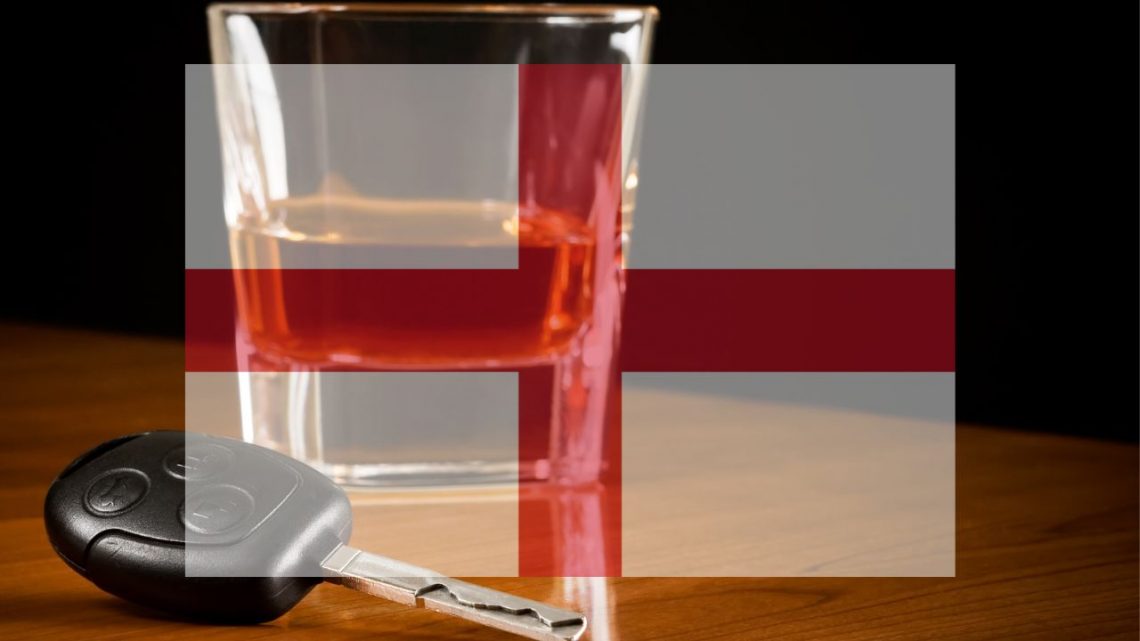In England, the maximum allowable blood alcohol concentration (BAC) for drivers is set at 0.08%—equivalent to 80 milligrams of alcohol per 100 milliliters of blood or 35 micrograms of alcohol per 100 milliliters of breath.
This article intends to provide information and raise awareness about the dangers of drunk driving in England. This website does not promote or condone drunk driving in any state or location.
What is the legal alcohol limit for driving in England?
In England, the legal alcohol limit for drivers varies depending on the type of license held and the driver’s age. These limits are crucial for ensuring safety on the roads and are strictly enforced to reduce the risks associated with impaired driving. Here is a breakdown of the legal alcohol limits for different categories of drivers:
- Regular Drivers: The legal limit is 0.08% BAC (Blood Alcohol Concentration), which corresponds to 80 milligrams of alcohol per 100 milliliters of blood.
- Commercial License Holders: For those holding a commercial driving license, the legal limit is reduced to 0.02% BAC, reflecting the higher responsibilities associated with operating commercial vehicles.
- Minors (Under 18): It is illegal for minors to drive with any detectable amount of alcohol in their system. The law enforces a zero-tolerance policy to protect young drivers and other road users.
Drink and Drive Penalties and Punishments in England
Facing the consequences of drink-driving in England can lead to severe penalties, including imprisonment, significant fines, and a driving ban. The severity of the punishment depends on the nature of the offense and is determined by the magistrates handling the case. Here’s a detailed overview of the potential penalties and punishments for drink-driving offenses:
- Being in Charge of a Vehicle While Above the Legal Limit or Unfit Through Drink
- Up to 3 months’ imprisonment
- Fine up to £2,500
- Possible driving ban
- Driving or Attempting to Drive While Above the Legal Limit or Unfit Through Drink
- 6 months’ imprisonment
- An unlimited fine
- A driving ban for at least 1 year (3 years if convicted twice within 10 years)
- Refusing to Provide a Specimen of Breath, Blood, or Urine for Analysis
- 6 months’ imprisonment
- An unlimited fine
- A ban from driving for at least 1 year
- Causing Death by Careless Driving When Under the Influence of Drink
- Life imprisonment
- An unlimited fine
- A ban from driving for at least 5 years
- Requirement to pass an extended driving test before the licence is returned
Rehabilitation and Reduction of Ban Offenders banned from driving for 12 months or more may reduce their ban by participating in a drink-drive rehabilitation scheme (DDRS) course, subject to court approval.
High Risk Offenders High risk offenders do not automatically get their licence back and must meet specific requirements for its reinstatement.
Additional Consequences A drink-driving conviction can also lead to increased car insurance costs, potential employment issues, especially for those who drive for work, and difficulties traveling to certain countries, such as the USA.
Given the complexity and the seriousness of drink-driving penalties, it’s crucial to stay informed about the current laws and regulations. For the most accurate and up-to-date information, regularly check the official state website. This ensures that you’re aware of any changes to the legal alcohol limits, penalties, and available rehabilitation options.
How Can I Calculate if My Alcohol Blood Limit is Legal in England?
In England, the police determine whether drivers are over the legal alcohol limit primarily through breathalyzer tests at the roadside. These devices measure the amount of alcohol in your breath, which is then used to estimate blood alcohol concentration (BAC). This method is quick, non-invasive, and allows law enforcement to efficiently screen drivers for intoxication. In cases where a breathalyzer indicates a level of alcohol above the legal limit, or if the device is refused, the police may require a blood or urine test at a police station to get a precise measurement of the driver’s BAC.
As an experienced phlebotomist with a decade of expertise, I recommend two methods to help you assess your BAC level and ensure you’re driving legally and safely:
- Use a High-Quality Alcohol Breathalyzer:
- For those seeking an accurate way to measure their BAC, the BACtrack S80 comes highly recommended. This device is known for its professional-grade accuracy and is DOT & NHTSA Approved, as well as FDA 510(k) Cleared. Keeping a device like the BACtrack S80 in your car is a wise decision, especially since it’s common for individuals to misjudge their level of intoxication. It serves as a reliable tool for self-assessment, helping to prevent impaired driving by offering a clear indication of whether or not you’re over the legal limit.
- Use My BAC Calculator:
- In collaboration with other phlebotomists and web developers, I’ve created a BAC calculator that’s available online. This tool is designed to help you estimate your BAC based on the quantity and type of alcohol consumed, your weight, and the time frame over which you’ve been drinking. It’s a user-friendly option for those who prefer a quick estimation without the need for a physical device.
It’s important to note that while both the BACtrack S80 and the online BAC calculator are useful tools for estimating your level of intoxication, they do not provide 100% accurate results. Factors such as metabolism, food intake, and individual health conditions can affect BAC levels and how alcohol impacts your ability to drive. Therefore, these methods should be used as guidelines to help you make informed decisions about your fitness to drive, rather than definitive measures of legality or safety.
By employing these tools, you can gain a better understanding of how alcohol affects your body and make more responsible choices regarding driving after consuming alcohol. Remember, the safest approach is to avoid driving if you’ve consumed any alcohol, ensuring you stay within the legal limits and protect both yourself and other road users.
Ways to Avoid Driving with a High BAC in England
Driving with a high Blood Alcohol Concentration (BAC) not only poses a significant risk to your safety and that of others but also carries severe legal consequences in England. Fortunately, there are convenient and responsible alternatives to ensure you get home safely without compromising your well-being or breaking the law. Here are two practical recommendations:
- Utilize Taxi Apps or Local Taxi Companies:
- In today’s digital age, accessing a ride home after a night out has never been easier. Apps like Uber offer a seamless way to book a ride with just a few taps on your smartphone. These platforms provide a reliable and safe means to get home without the risk of driving under the influence. Additionally, for those who prefer traditional methods or want to support local businesses, taxi companies such as Mason & Green in London or Manchester Taxis in Manchester offer professional services with the convenience of a personal touch. Opting for a taxi ride eliminates the risk of driving with a high BAC and ensures you arrive at your destination safely.
- Order a Designated Driver Service:
- If you find yourself in a situation where you’ve driven to a venue but realize you’ve consumed too much alcohol to drive back safely, a designated driver service is an excellent solution. Services like Wheely in London or SK EXECUTIVE in Manchester provide professional drivers who can drive you home in your own vehicle. This not only allows you to avoid leaving your car unattended overnight but also ensures a safe return home. To find a designated driver service in your area, a simple Google search for “designated driver service” along with your city name will yield various options. This proactive approach not only keeps you legal but also safe on the roads.
By planning ahead and choosing one of these alternatives, you can enjoy your social engagements without the worry of how to get back safely. Whether it’s booking a ride through an app or employing a designated driver service, these options are designed to keep you and the roads safe. Remember, the goal is to make responsible choices that protect you, other road users, and the community at large from the dangers associated with drink-driving.
Sticking to Drink and Drive Laws in England
In 2020, the United Kingdom witnessed approximately 200 fatal collisions due to drink-driving, with England recording the second-highest rate of such incidents in the U.K. Despite England’s higher BAC limit compared to other European countries, there are no current plans to reduce it. The substantial safety risks associated with intoxicated driving underscore the importance of abstaining from driving after consuming alcohol. Alternatives like designated driver services and taxis offer safer options.
It’s crucial to be aware of your blood alcohol concentration (BAC) before deciding to drive. Using an alcohol breathalyzer can provide a reliable estimate of your BAC level, helping you make informed decisions about your ability to drive safely. For comprehensive information on drunk driving regulations in England, consulting the official United Kingdom website is recommended.
Impaired driving poses a serious danger, potentially leading to loss of control and endangering both the driver and others on the road. Awareness of the risks and taking preventive measures, such as using alternate transportation methods, is essential for safety. If driving is unavoidable, ensure your BAC is within legal limits to maintain your driving ability and adhere to the latest drink-driving laws by staying informed through official channels.







